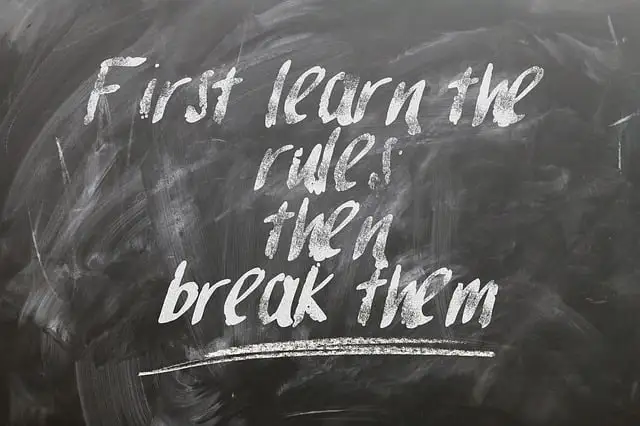There are 9 million open jobs in the U.S. right now. Politicians love to say the economy’s booming. So why does it feel impossible to land a job?
I’ve helped three friends recently land real jobs—good ones. In this breakdown, I’m going to show you four reasons the job market is stacked against you, and then walk you through the exact five-step process that worked for them. Let's cut through the noise.
Reason 1: Misleading Job Data
You’ve probably heard the unemployment rate is 3.7%. Sounds great, right?
But here's the truth: that number is BS.
The Bureau of Labor Statistics only counts someone as “unemployed” if they’re actively looking for work and available to start right now. So if you’ve been job-hunting for months, burned out, and take a break? You’re suddenly not unemployed anymore—statistically, you just vanish.
This data also ignores entire groups: students, people with disabilities, retirees, caregivers, and active military. That’s nearly 40% of the population.
This false optimism feeds a toxic narrative. My neighbor—a QA engineer—was laid off after getting his life together. New apartment, new furniture, solid career. Then boom—out of work. He’s been applying like crazy and hearing nothing back, while headlines scream 'best job market ever.'
So what's actually going on?
Reason 2: Ghost Job Postings
A 2023 survey confirmed it: companies are posting jobs they have no intention of filling. No interviews. No callbacks. Nothing.
They’re called ghost jobs.
Some companies do this to stockpile resumes, building a pipeline in case someone quits. Others do it for something worse—market intelligence. Every time you apply, you're handing over valuable information: your skills, salary expectations, past employers. They're using that data to make decisions about pay scales and industry demand.
Fractal, a digital marketing firm, openly admitted to this. They kept associate-level job postings live even when they weren’t hiring—just because turnover is high.
This means people like my neighbor are spending hours a day applying to jobs that don’t even exist. It’s a game you can’t win.
Mentions of ghosting are up 77% since February 2020. And it’s only getting worse.
Reason 3: The Wrong Jobs Are Available
Yes, there are jobs out there—but are they jobs worth taking?
Walk down any street and you’ll see Help Wanted signs. Mostly at gas stations, fast food joints, and retail stores. But if you’re looking for something that matches your skills, offers benefits, and pays enough to live on? Good luck.
41% of job seekers say they can’t find openings in their industry. And nearly half—46%—say the only jobs they can find pay too little.
Why? Leverage.
Companies know more people are looking for work than there are roles available, so they lowball offers. And let’s be honest—taking a low-wage job that barely covers rent isn’t always better than holding out for something that makes sense.
This is where opportunity cost comes in. Every hour you spend stocking shelves could be an hour building a real opportunity. In some cases, taking a bad job is worse than staying unemployed.
Reason 4: Recruiting Is Completely Broken
You’ve probably used LinkedIn, Indeed, or ZipRecruiter. Fill out a profile. Attach your resume. Click Apply.
The same thing thousands of other applicants are doing.
Because of the flood of spam applications, companies now use AI to screen resumes. A 2023 study found that up to 75% of resumes never even get seen by a human.
Qualified or not—it doesn’t matter. The AI filters everyone.
And even if you do make it past the AI, you might never stand a chance. Why? Because many roles are already filled before they’re posted.
Elliot Garlock, a recruiter at Stella Talent Partners, said it himself—companies often have someone in mind before the job goes live. It’s just a formality.
And here’s the kicker: a 2014 study found referrals account for 30–50% of hires. If you get referred, your chance of getting hired jumps by 40%.
Translation: if you don’t know someone inside, you’re playing a rigged game.
So What Can You Do?
Here's the five-step process I shared with three friends who all landed jobs. It's not about applying harder—it’s about applying smarter.
- Step 1: Build Your LinkedIn. If you don’t already have one, make one. Fill it out with everything—school, work history, hobbies, skills. Add a photo.
- Step 2: Grow Your Network. Add everyone you remotely know. Met once at a party? Went to the same high school? Doesn't matter—most people accept LinkedIn requests.
- Step 3: Target the Right People. Find a job listing you like. Go to the company’s actual website and confirm it’s real. Then, search the company on LinkedIn.
- Step 4: Make Contact
- Send a short message. You’re not pitching—you're connecting. Try something like:
- 'Hi, my name’s Vincent. I saw you're working at Uber and I’m really interested in the operations role. I used to do operations at Mr. Magic Lamp Co., and I noticed we both love pineapple pizza and gaming. Are you free for a quick 15-min chat this Friday?'
- Get on a call. Ask about the role, share your experience, and—this part is key—ask for advice on getting the job. That’s code for: can you refer me?
- Referrals = thousands in bonuses for them, and a foot in the door for you.
- Step 5: Wait to Apply
- Do not apply for the job before getting the referral.
- If you apply first, they won’t get the bonus and they won’t refer you. Always wait.
- Then repeat. And repeat again. It’s a numbers game, but this method gives you an actual edge.
The Harsh Truth—and What’s Next
You might be doing everything right and still feel stuck. That’s normal. That’s the system.
But you can change your odds.
No fluff. No false hope. Just strategy.
Good Reads

The easiest method to generate a passive crypto income with crypto and make money at home

Did you know that 50% of Americans believe they're in the middle class? But here’s the kicker: most of them are wrong.

If you’ve got $10,000 and you’re ready to invest, let’s talk

I went from growing up broke to having seven figures in my 20s

Learn the six habits that are stoping you from becoming rich and how to change them

If you want to manage your money like the top 1%, this is the system you need to know: the 75/10/15 rule

What if I told you that with just 10 ETH today, you could build a passive income stream of over $1,800 per month—in just 10 years?

What if I told you there's a way to transform a simple $10,000 investment into a machine that could pay you thousands of dollars in monthly income during retirement?

Understanding Municipal Bonds: A Direct Guide for Smart Investors

Municipal bonds are far from flashy—but that’s their strength
